
I worked a hitting camp last month and we were able to break the hitters attending into two groups based on HOW THEY USED THEIR PELVIS. Then afterwards we spent some time on hinging (but not a lot because they all caught on quickly) and then 90% of our time was spent on coiling and moving the middle – then integrating & blending those movements in proper sequence.
We talked about a “LINEAR COIL” — forward by moving the middle, using multiple planes of motion.
That is MOVING THE MIDDLE LINEARLY (forward by coiling) WHILE THE PELVIS CONTINUES TO MAINTAIN & INCREASE TENSION. The hitter increases his/her power source by doing BOTH: creating linear momentum by the forward motion of the center of mass (COM) AND creating elasticity via coil and body positioning/orientation.
IF a hitter can do BOTH, then good “transfer mechanics” will transform “IT” into bat speed and POWER. Developing linear and coiling motions simultaneously while using multiple planes of motion and then blending them is not a personal preference or a “style thing” but instead a NECESSITY. The COM has to move forward before rotation in order to avoid “SPINNING”.
In order to achieve effective rotation that transfers into bat speed, “moving the middle” in sequence is ESSENTIAL.
Very few to none of the campers had any concept that they should be doing “both”; so we broke the campers into two groups based on how they used their pelvis.
GROUP #1 were “lunging”, because they were trying to get their foot down early which predisposed them to go forward towards the pitcher and falling away or pulling off or stepping in the bucket. GROUP #2 was “swaying backwards to load”and “hanging or leaning back” because they are use to getting to a balanced point like the karate kid on their back leg.
After a couple of hours, all of the hitters knew what MOVING YOUR MIDDLE felt like and could execute it properly during front toss. I’m going to go through what we did at the camp to share with all of you.
The first MYTH we had to disspell with both groups was the timing of when coiling then MOVING THE MIDDLE happens. A cue I really like is “HINGE EARLY, COIL LATE”. Most all were FEARFUL OF BEING LATE; did not want to swing and miss; preferred to be way early and hit little dinkers.
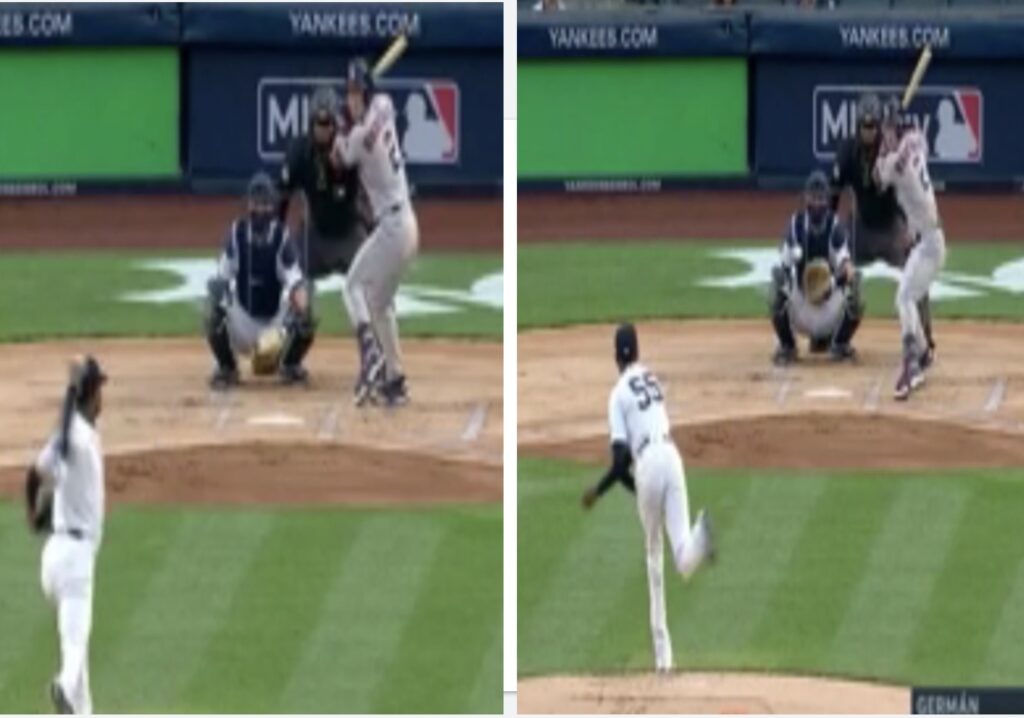
The MOVE OF THE MIDDLE directly effects POWER (Rate of Force Development).
Every hitters’ GOAL for coming to the camp was to GAIN MORE POWER. Getting the stride foot down EARLY “robs” hitters of power. No hitter ever wants to be late BUT BY BEING LATE, ESPECIALLY IN PRACTICE, FORCES THE BODY TO SELF-ORGANIZE and increase its rate of force development. Otherwise, being early all the time just allows the body to be lazy and conserve its energy and never train & develop the fast twitch fibers to even get faster and more explosive.
TWO CULTS, BOTH WRONG
Whether watching side toss or front toss with a less experienced hitter, most times right after the ball is released from the tosser, the hitter will usually fall into GROUP #1 or GROUP #2:
GROUP #1: immediately puts their front foot down early and there is little to no contribution from the coiling of their pelvis (STEP THEN SWING PATTERN, sometimes step AND swing), in other words, NOT MOVING THEIR MIDDLE. The hitter that gets their foot down early, usually steps in the bucket with little to no pelvis contribution and over relies on the torso (either twisting and counter rotating or spinning with the shoulders or both), without a stable “posture”.

GROUP #2: he/she holds too much weight on their back side/back leg, in other words, NOT MOVING THEIR MIDDLE. Instead, this hitter tries to balance on the back leg (karate kid pose) with no weight shift. Getting one legged and creating a balance point and holding the hips static and paused at peak stride lift with NO shift forward of the center of mass will result in the front hip laterally moving forward and the shoulders moving in an uphill/tilted/leaning backwards position and angle as the head also moves rearward.

These are two polar opposite hitting “cults” on this issue. I’m suggesting both are focusing on what’s going on with the legs instead of focusing on the MIDDLE -the pelvis. Remember the PELVIS integrates with the spine and coordinates “posture” AND the pelvis also couples movement with the femurs and glutes to create proximal to distal control.
From a young age, whether it be tee ball or coach pitch, kids are NOT taught to load and coil their pelvis, nor to move their middle thus ingraining in their movement pattern this idea of stepping with their stride leg (usually to get out of the way from getting hit by the ball) and getting it down early (playing it safe) while waiting motionless as the tosser releases the ball.
At a certain point and after gobs of money on new bats and numerous hitting lessons, some parents want their child to hit the ball further and harder, so they leave GROUP #1 and go to GROUP #2.
It’s a false choice to either get all of your weight on your back leg or get your foot down early.
TRYING TO FIND THAT PERFECT MIDDLE GROUND
Forward by coiling the pelvis or shifting forward while continuing to load the pelvis is what all good hitters do and what we refer to as MOVING THE MIDDLE. (SEE PHOTO BELOW). The ball is approximately 15 feet away and the hitter’s pelvis is still coiling while his COM is shifting 3-5 inches forward, but his head and posture is staying “stable”.
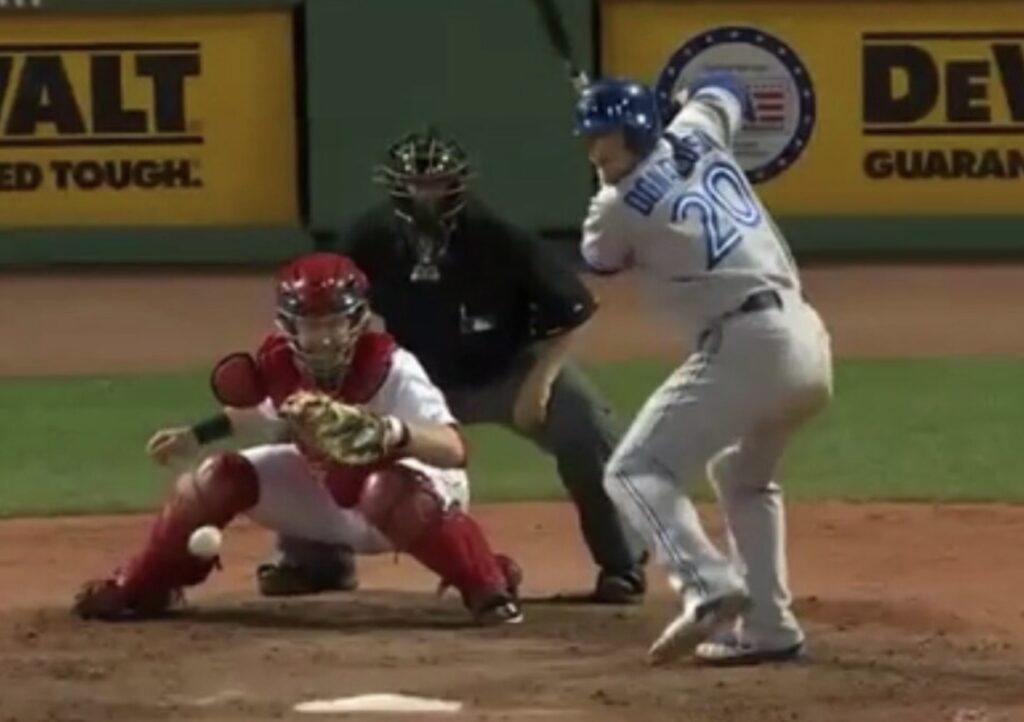
I think most hitters are trying to find that “perfect middle ground” of either putting their stride leg down early or holding too much weight back.
Listen to the AAA hitter below perfectly explain his dilemma as he wrestles with his frustration of NEITHER HAVING CONSISTENT SUCCESS WITH getting his front leg down early NOR staying one-legged. His conclusion is to do the walk-up drill &/or start open with his torso -which gives him the perfect middle ground — in other words, (my translation) the feel of hinging his pelvis BEFORE coil AND moving the middle via his rear glute after the pitcher’s release. Take a listen.
Without the proper sequence, he was inconsistent – either too far forward or too far backward.
“Not in it, not in it —out of it, out of it”. Awesome description.
A good hitter FEELS WHAT IS GOING ON WITH THEIR PELVIS. The pelvis is the control center for the spine and posture and the legs (glutes, femurs, etc.).
The back & forth of whether to be early or late goes through every hitter’s mind. I say, BE BOTH. EARLY WITH THE HINGE BUT LATE WITH THE COIL.
He says, “I never wanted to load late”. When talking about the pelvis remember it’s about RELATIVE MOVEMENT and not just orientation. So when hitters say, “my first move” we have to distinguish between hinge/load of the pelvis versus coil/moving the middle and we have to figure out the relative movement and the different planes of motion.
HINGE (gather) EARLY; COIL (move the middle) LATE. (See the Alex Bregman swing analysis below).
The walking drill (OPEN STANCE) is a great drill to feel the MOVE OF THE MIDDLE — it forces the center of mass to move forward — and is a great drill to feel the integration of the hinge of the pelvis with the coil of the pelvis. (Reread the article on the 3 planes of motion of the pelvis).
When you do the walking drill, it MOVES THE MIDDLE. THE PELVIS IS IN CONTROL. He says “THE BACK HIP HAS THAT MOVE….just go, just walk” —-in other words, COIL/move the middle… just walk – don’t try to overdo the front leg lift because it either results in SWAY or that one-legged, balanced point, karate kid pose – he says when helping his sister, when she gets one-legged (“too much leg lift”) she starts hanging back and losing balance. Awesome description by Blake.
(Side note: The twisting up he talks about is the counter rotation of his torso &/or shoulders – which is the body’s way to search for tension that should be, but not being created by the co-contractions of the hip and glute).
CASE STUDY: ALEX BREGMAN
Blake mentioned watching video of Bregman – it is clear Breg’s hinges his pelvis early and coils later. Take a look at the frame on the left right after pitcher’s hand break and the frame from the same at bat, right after the pitcher’s release.
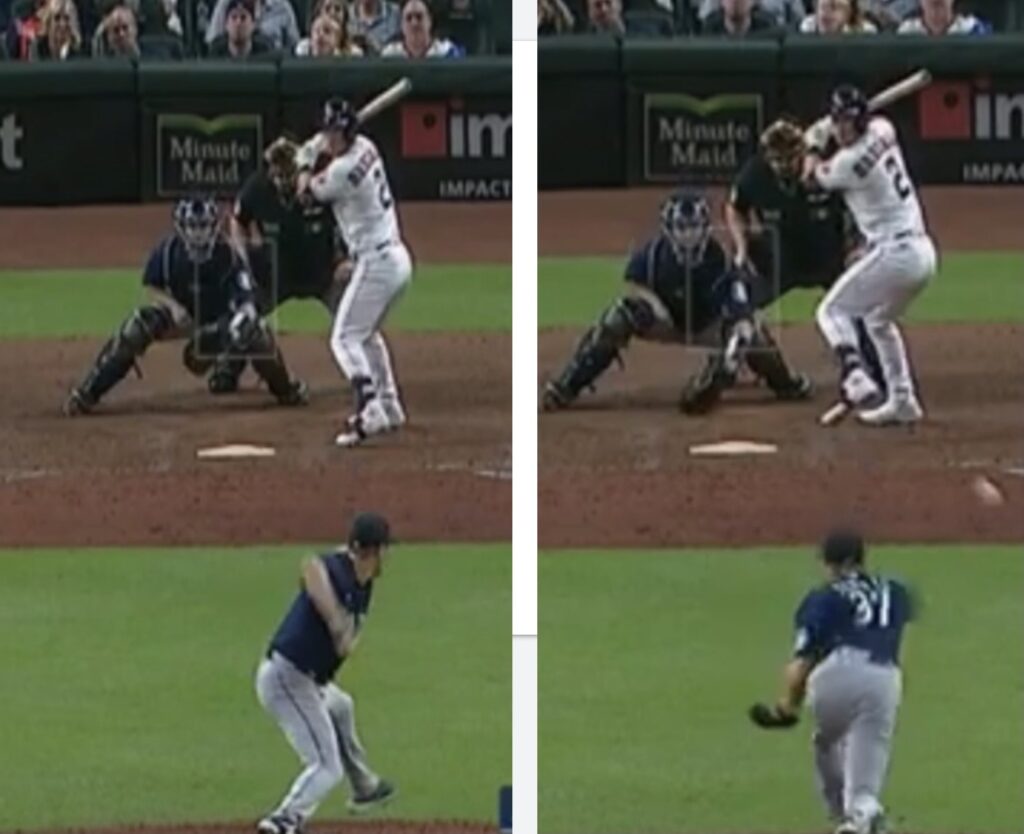
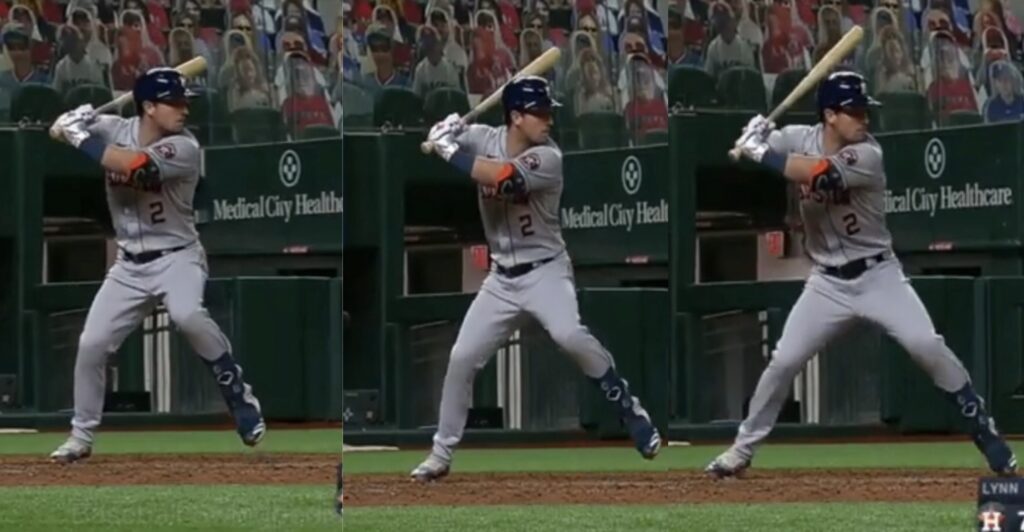
The open view shows the sequence of Bregman’s pelvis load – use the reference of the “white sticks” behind him – so we can gauge how HE MOVES HIS MIDDLE.
In the first frame on the left DURING HIS PELVIS HINGE, the “white sticks” start out and STAY perfectly centered during his hinge. Notice he doesn’t need a high leg lift to hinge his pelvis. He is not swaying backwards. He is not trying to get into a one-legged karate kid, balanced point pose.
In the middle frame, he has maintained and increased his hinge/tension in his pelvis while his pelvis is COILING/moving the middle (his belt buckle is turning or twisting in the direction of his back thigh) and again using the “white sticks” behind him, his center of mass is moving forward—WHILE his head and spine (“posture”) stays STABLE.
Then in the last frame on the right he is at toe touch as his pelvis has started to rotate (belt buckle has changed directions). His head and spine (“posture”) remain stable; IOW, not tons of lateral bend or shoulder tilt or his head dumping backwards.
Below is the same swing in slow motion video.

HOW TO MOVE THE MIDDLE
Two reference points to pay attention to figure out what your COM (center of mass) is doing – #1 your belly button, and #2 your nose. Just like Bregman did, we are trying to get the belly button to shift 3-5 inches forward and the nose stay perfectly still while the pelvis is coiling or twisting (NOT SWAYING) away from the incoming pitch, until the ball is 12 feet away. SIMPLE HUH! It’s not a magic trick like on the left, but it is exactly what the magician’s assistant is doing on the right.

It is a tricky movement pattern and takes time to really feel & synch up.
The best option is to learn how to load your pelvis in the right sequence – after activating your pelvis by hinging then there must by a shift of the center of mass – moving the middle” — without leaning backwards with the torso/upper body and without letting your head move forward either. STAY STABLE WITH YOUR SPINE.
GOOD STUFF! Put your own “twist” on it.
LEAVING THE “CULTS” BEHIND
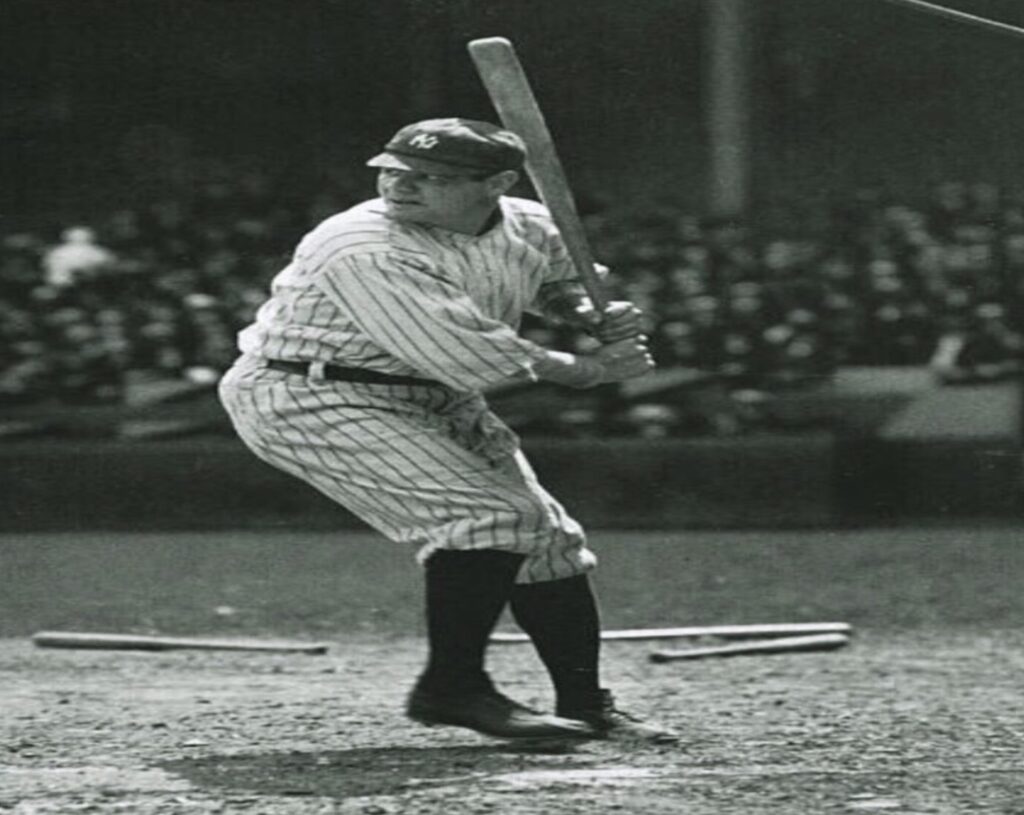
Just like pitcher’s in baseball, hitters have to experiment with dynamic posture and figure out how to maintain their balance and COM without swaying or leaning backwards nor lunging or stepping forward.
Working on functional movements in a variety of training settings (single leg exercises) is critical to developing better dynamic posture and balance and body awareness. As the pelvis learns to coil over a stable back leg while shifting the COM, it puts the hitter in a powerful position by eccentrically loading the core muscles (abdominal obliques).
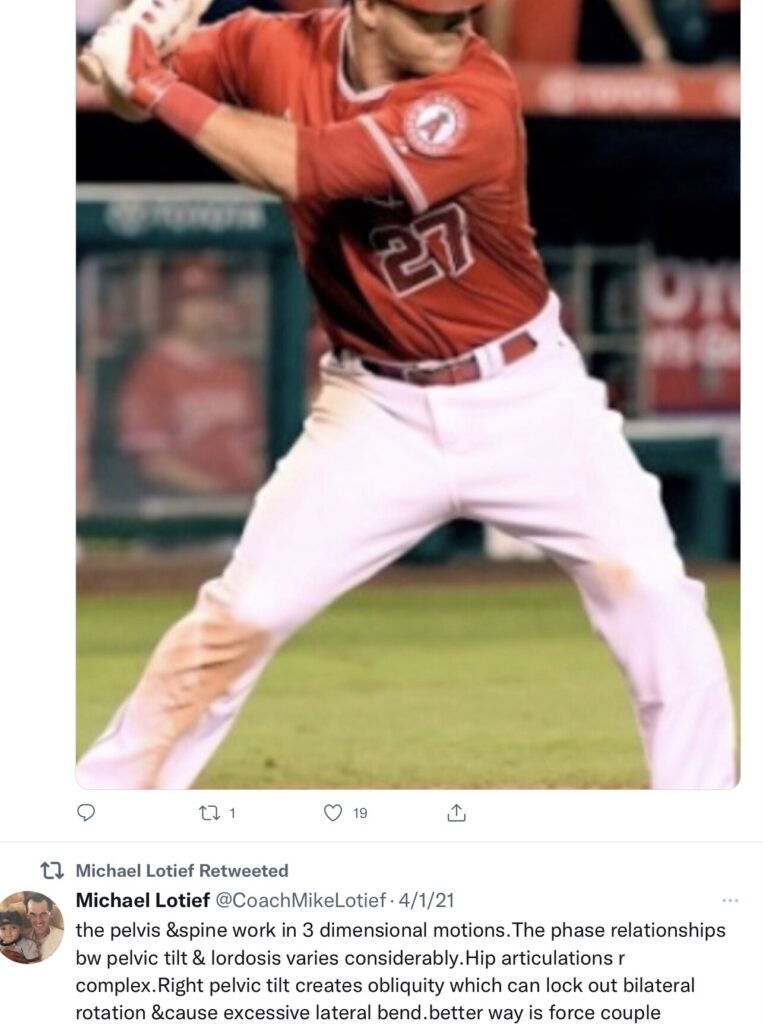
PURSUE EXCELLENCE & WIN THIS PITCH!
About the Author

Mike Lotief coached 17 successful years as either the head softball coach or co-head softball coach with his wife Stefni Whitton Lotief at the University of Louisiana from 2002-2017 with an overall coaching record of 731-176 (80.6 winning percentage). Every season, the Ragin Cajuns softball team advanced to the NCAA tournament and also advanced to three (3) Women’s College World Series (2003, 2008, 2014) and from 2012-2016 advanced to five (5) straight NCAA Super Regionals. Coach Lotief produced over 40 All American selections and his 2017 team lead the nation in scoring and was ranked in the Top 10 in home runs, slugging percentage, on base percentage.
The coach is a cancer survivor (twice) and was the first person in the U.S. to receive the Pro Trach device. Mike and Stefni spearheaded and raised the funding to build the new softball stadium in 2009 and the new softball indoor hitting facility in 2015. They are proud parents to Chelsea, who played softball and graduated from the Univ. of Louisiana in 2018, and Andrew, who is a junior at Louisiana studying Mechanical Engineering.
Previous Articles in this Series
- The Mental Swing Attractors: Failure Cannot Break You (Nov. 11, 2021)
- Training Insights: “Swing Attractors” by Coach Mike Lotief… the Flaws of Pelvic Loading (Nov. 9, 2021)
- The Mental Swing Attractors: Push Yourself… You Don’t Have to Be #1 to BE #1! (Nov. 4, 2021)
- Training Insights: “Swing Attractors” by Coach Mike Lotief… Pelvis Loading, Part 2—The Planes of Movement (Nov. 2, 2021)
- The Mental Swing Attractors: Remove the Rope from Your Ankle & Get Rid of the Limiting Beliefs! (Oct. 28, 2021)
- Training Insights: “Swing Attractors” by Coach Mike Lotief… Pelvis Loading, Part 1—It’s All in the Hips (or Somewhere Deep Below) Oct. 26, 2021
- The Mental Swing Attractors: Champions are Developed by Devotion & Discipline! (Oct. 21, 2021)
- Training Expertise: “Swing Attractors”… the Secrets of Power Hitting by Coach Mike Lotief (Oct. 19, 2021)
More About Mike Lotief
- Why Michael Lotief is a Legendary Coach? by Jay Patel
- The Secret To Michael Lotief’s Success. By Jay Patel
- Michael Lotief Fights for Rajin’ Cajuns by Graham Hays ESPN
- Michael Lotief: Taking His Sport to New Heights by Neha Kapoor
- For the Love of the Game: A Look at Ragin’ Cajun Softball’s Power Couple
- How Louisiana-Lafayette’s Michael Lotief Develops Hitting Gems by Graham Hays ESPN
